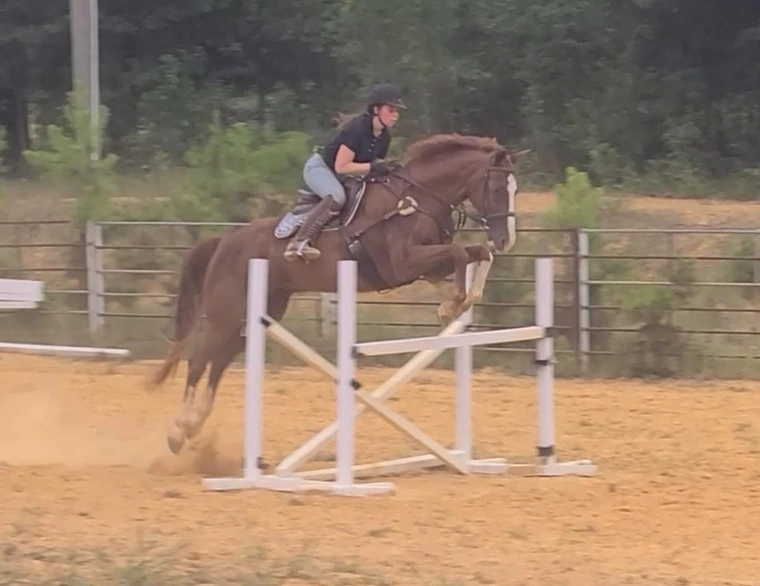You have a nice low base of support, but as you pointed out, your entire body falls behind the motion of the bigger jump effort (lovely horse!). So your lower leg swings back, your butt drops down and back, and your upper body, though nicely folded at the hip, isn’t able to stay balanced over the middle of your horse, which in turn doesn’t allow your hands the ability to reach forward and down into an automatic release.
On the flat, I would practice posting at the canter. Tremendous benefits for rhythm management but also mobilizes your hip and leg joints and works on the up and forward/down and back balance. If that goes well, work on seamless transitions in your position, going from posting, to 2-point, to 3-point, to sitting deep, etc. Get to the point where you can swap through those different positions in any order without disrupting your balance or the horse’s balance. I would practice this at all three gaits and in a variety of stirrup lengths (where you are now, shorter than that, and longer than that).
Over fences, you can keep the jumps small. Practice going through a series of several bounces or variations of 0,1, or 2 stride grids while maintaining a steady position. In other words, find your stable half seat or 2 point and hold that in your approach, through, and departure from the grid. Keep your balance centered over the middle and let your horse come up to you. Even cavaletti or poles would work here. I realize that the bigger jumping effort is what causes you to drop back physically (and mentally too maybe) but since you can’t and obviously shouldn’t jump 3’+ jumps every day just continuing to improve your balance and position over bounces will make a difference. On your jump days, you can simply do this same exercise and add your larger fences at the end.



 )
)